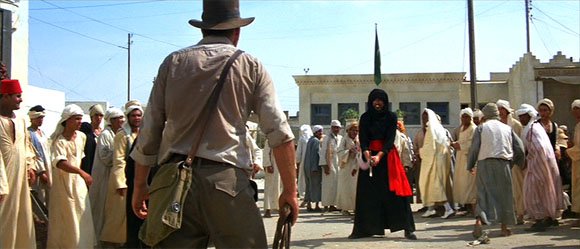2014-06-21 In a recent presentation at the Air Force Association, Col. Michael Orr, the CO of VMX-22, provided a look at how the USMC is shaping its combat cloud approach for the MAGTF.
At the heart of the approach is working the following challenge:
“We are working to push increased situational awareness, big picture CAOC-type information, down to individual warfighters using secure tablets in tactical aircraft en route to an objective area.”
Based on his recent experiences in working with the Infantry Officer’s Course and with Marine Aviation Weapons and Tactics Squadron or MAWTS-1, Col. Orr discussed the USMC approach to shaping what might be called the combat cloud for the air-ground team.
Col. Orr underscored that for the USMC digital interoperability was about empowering warfighters. He argued that the experience of pilots in having significant connectivity and situational awareness was not the same as what the ground combat element or GCE in the USMC was experiencing.
He described this as a split between the haves and the have-nots.
In the air combat world, pilots and air controllers have seen significant gains in connectivity and situational awareness. For many of the ground combat element, they were operating in virtually Vietnam era conditions with radio communication as the only link.

The Marines have been changing dramatically key aspects of how they insert force, notably around the Osprey.
With a rotorcraft, the ground forces and commanders get on the helo and arrive within the hour at the objective area. In an air-refuelable Osprey, the ground forces and commander might spend several hours in the back before reaching the objective area; and obviously, not being informed and able to do mission planning in route is unacceptable.
Whatever gains one might get with speed and range will be lost without enhanced C2 and ISR enabling the GCE in flight to the objective area.
Our passion right now is taking all of the information from airborne and off-board sensors and pushing that tactical information to a warfighter in the back of the Osprey.
It could be an air mission commander or a ground force assault commander.
We need to provide that sensor-based information to the decision maker so they can make smart and intelligent decisions en route.
With regard to the AFA discussion, Orr underscored:
Our effort very akin to the broader USAF combat cloud discussion, only we bring it down to a much smaller taskforce level.
And at that level, we are focused on a specific objective, but it’s one that’s scalable up to a larger environment.
The cacophony of wave forms and proprietary solutions is simply out of sync with where the USMC is going with its new aviation assets and working relationships with the GCE in shaping the 21st century MAGTF.
We’re moving towards a software programmable payload solution that enables a software programmable radio to take sensor inputs in and then put the inputs out in a variety of waveforms.
And this is really where we are headed.
Currently, the Marines are experimenting with various gateway solutions to empower the GCE working with Marine air to provide for more effective combat solutions.
One item, which has been tested, is the remote control of UAV payloads from ground or airborne situations.
We’ve executed remote control of payloads from the back of the V-22.
We have also done it from a ground based cyber and electronic warfare coordination center.
Col. Orr also discussed the USMC effort to merge the complementary capabilities of two traditionally separate, very separate communities.
We have signals intelligence professionals, primarily ground-based radio battalions who report back up through Title 50 authorities.
And then we have a separate group that does electronic warfare, notably the EA-6B Prowler conducting tactical electronic warfare.
Those two communities traditionally haven’t really talked much.
We are bringing them together in the same facility called the Cyber/Electronic Warfare Coordination Cell (CEWCC).
That Cyber/Electronic Warfare Coordination Cell provides the MAGTF commander the ability to deconflict and conduct operations within the electromagnetic spectrum at a tactical level.
At tactical level, the CEWCC allows us to be able to combine cyber and electronic warfare effects and have the commander make decisions ranging from listening to deception to jamming.
Finally, he discussed the importance of using tablet-sized software to get information into a usable package for the ground warriors.
“The tablet format allows the user to define what they want to see, not a higher headquarters to decide what you need to see, but to allow the individual operator to pull down that information and scale it to your desired level of detail.”
Col. Orr closed his presentation by posing a challenge:
“How do we provide the end user with the right information and provide them the right flexibility to see what they need and what they care about, and do so in the right security framework environment that properly protects the information?”
For further pieces on USMC innovation with regard to tiltrotar-enabled operations for long-range force insertion see the following:
https://sldinfo.com/usmc-long-range-raid-shaping-an-insertion-force-for-the-21st-century/
For a discussion of the combat cloud concept see the following:
https://sldinfo.com/the-next-phase-of-air-power-crafting-and-enabling-the-aerospace-combat-cloud/



